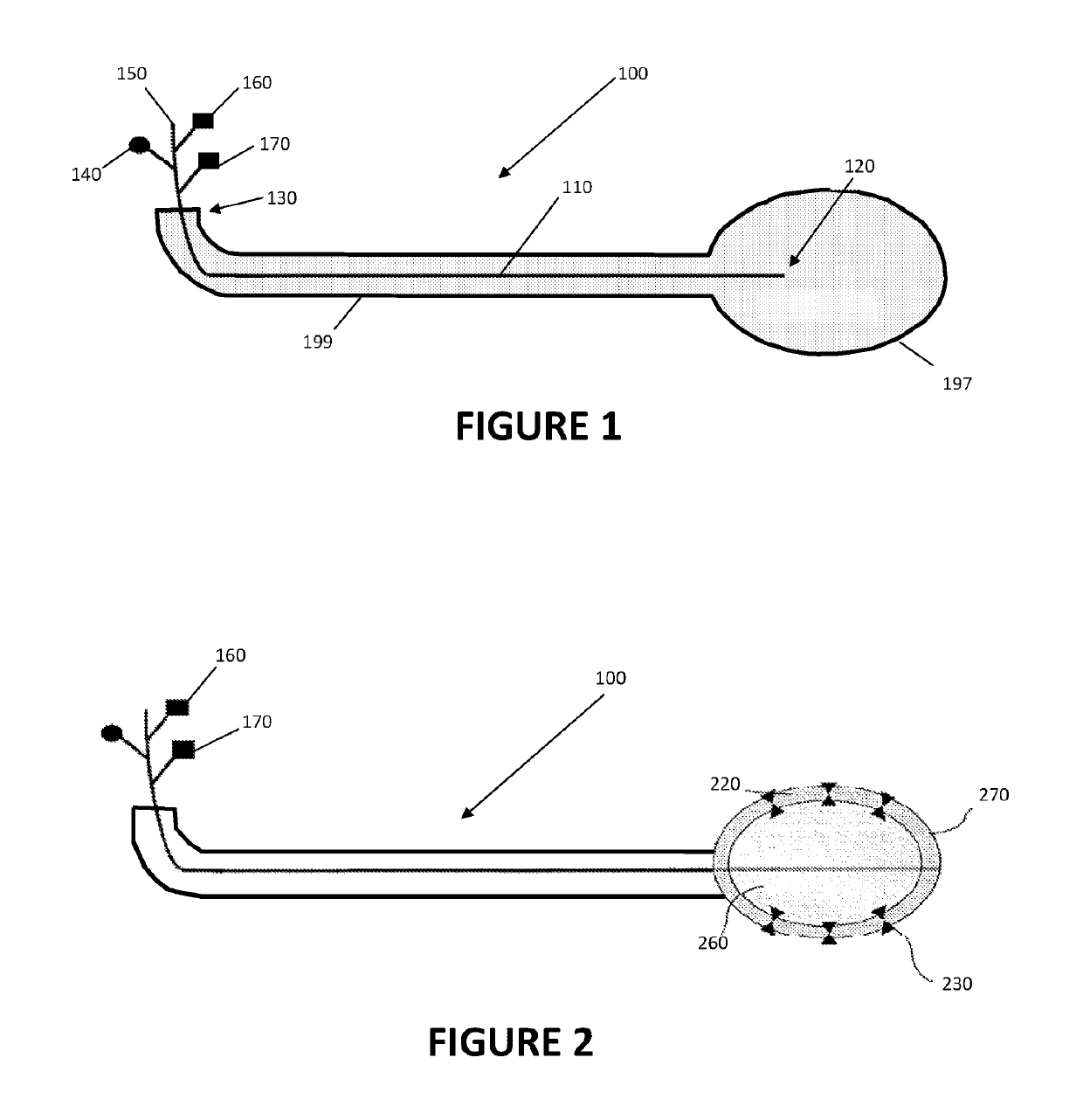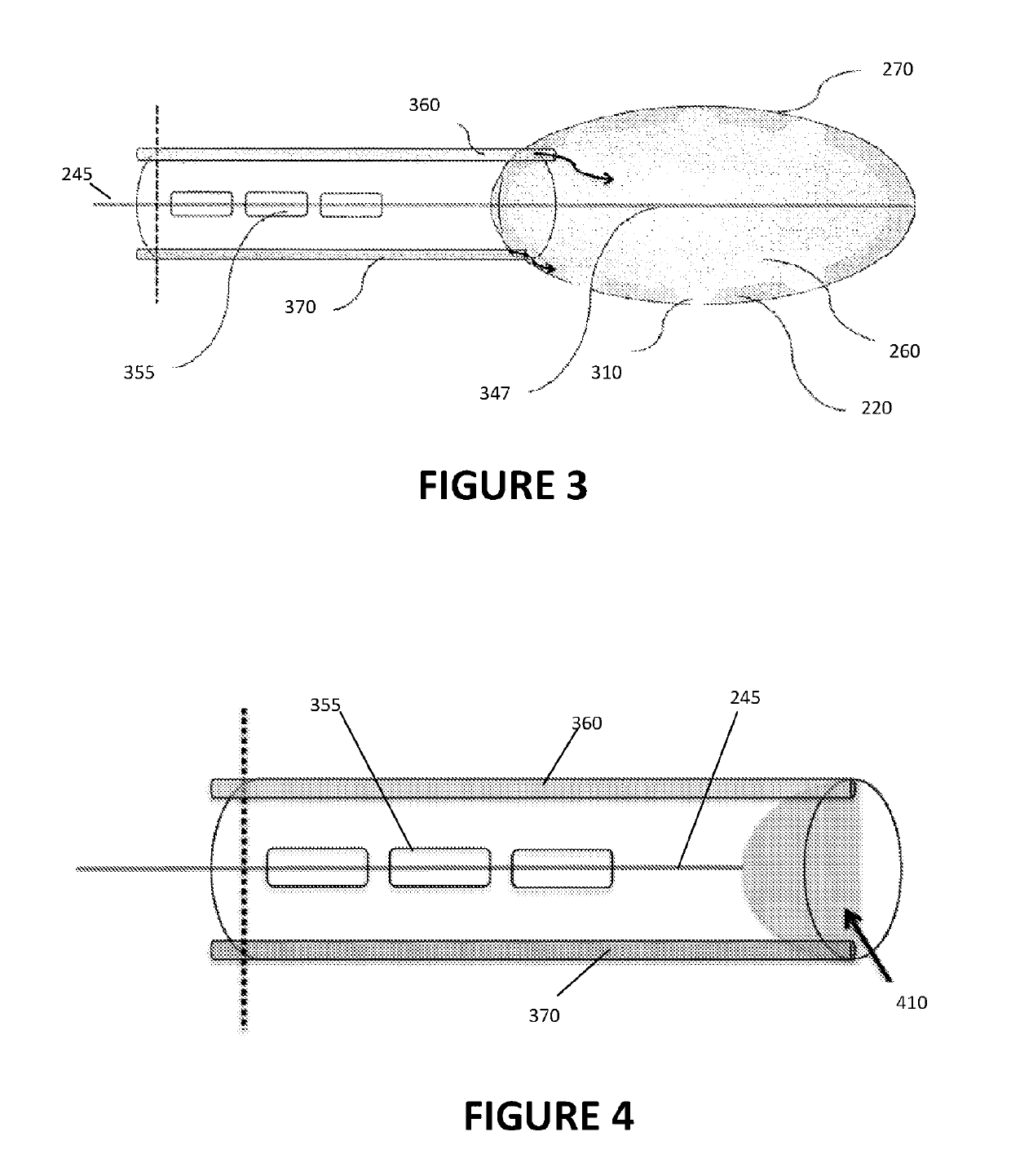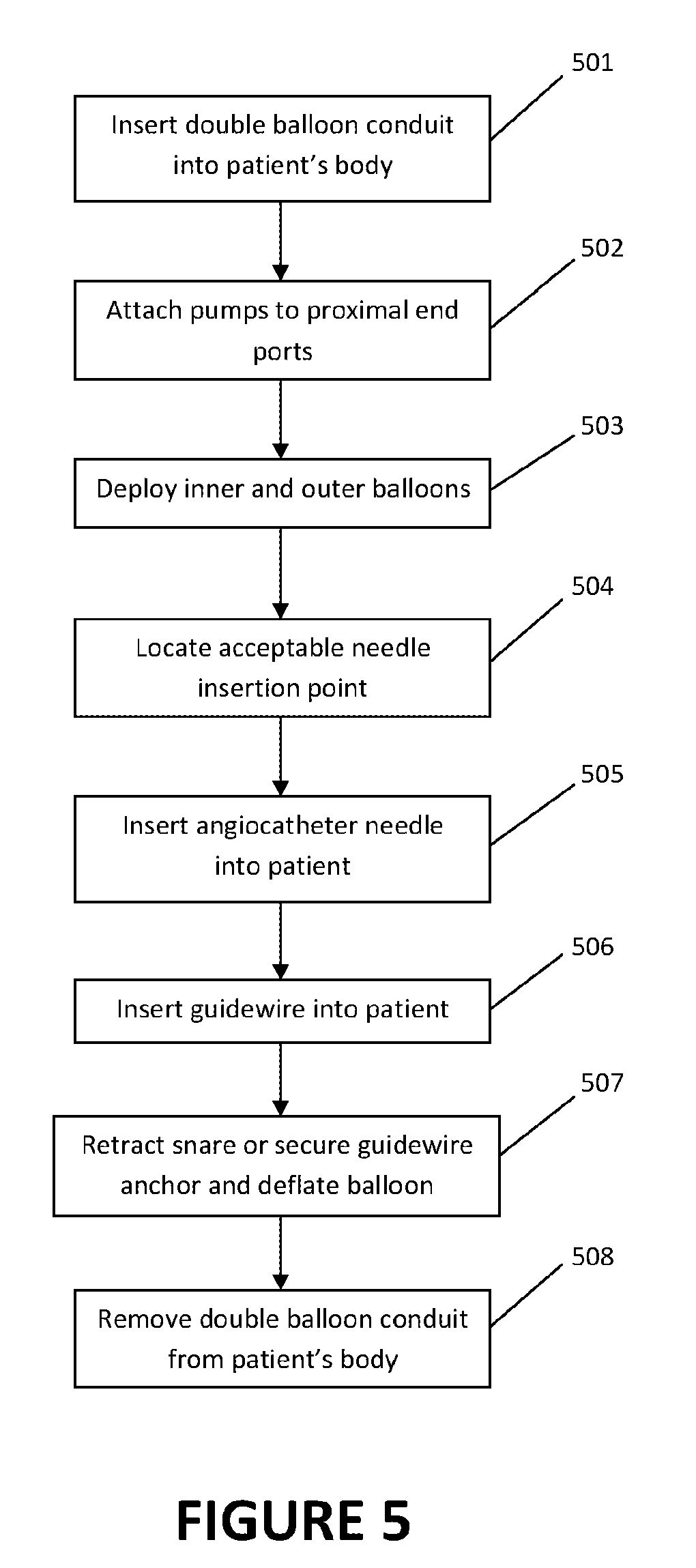Method and apparatus for coaptive ultrasound gastrostomy
a coaptive ultrasound and gastrostomy technology, applied in the direction of balloon catheters, surgical needles, catheters, etc., can solve the problems of difficult operation, difficult to achieve, and difficult to move the conduit to the intended location
- Summary
- Abstract
- Description
- Claims
- Application Information
AI Technical Summary
Benefits of technology
Problems solved by technology
Method used
Image
Examples
Embodiment Construction
[0011]Disclosed herein is a system and method for placement of a catheter, conduit, or other elongate member, and more particularly a gastrostomy tube, within a patient's body. Such system and method are suitable for use in therapeutic interventional and / or diagnostic procedures, and may be useful for placement of medical devices, including catheters or other conduits, in varied tissue planes and cavities in a patient's body, including by way of non-limiting example the thorax, abdomen, blood vessels, and pericardium, for diagnostic, therapeutic, and / or procedural purposes. For example, such system and method may be useful in the placement of a catheter within a patient's stomach during a procedure for placement of a gastrostomy tube. Further, such system and method may be useful in the positioning of a suction tube within a patient's body to remove unwanted fluid. As used herein, all of such carriers, catheters, conduits, delivery devices, internal probes and sensors, electrodes, a...
PUM
 Login to View More
Login to View More Abstract
Description
Claims
Application Information
 Login to View More
Login to View More - R&D
- Intellectual Property
- Life Sciences
- Materials
- Tech Scout
- Unparalleled Data Quality
- Higher Quality Content
- 60% Fewer Hallucinations
Browse by: Latest US Patents, China's latest patents, Technical Efficacy Thesaurus, Application Domain, Technology Topic, Popular Technical Reports.
© 2025 PatSnap. All rights reserved.Legal|Privacy policy|Modern Slavery Act Transparency Statement|Sitemap|About US| Contact US: help@patsnap.com



